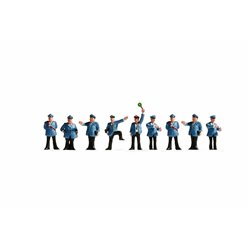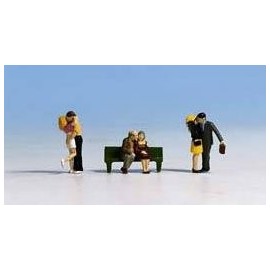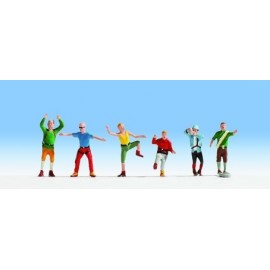For many in the hobby, a model railway is more than just a collection of trains, track and scenery. It's a living,...
No products
Product successfully added to your shopping cart
There are 0 items in your cart. There is 1 item in your cart.
Search Tips
Christmas and New Year
We are dispatching orders every weekday apart from Christmas Day, Boxing Day and New Year's Day.
If you select next day delivery at checkout, please note deliveries are not made on public holidays or Sundays.
The shop in Sandown is open 23rd and 24th December, then closed from 25th December, reopening on 30th December.
What is 1:160 scale?
To answer the question: What is 1:160 scale? I would like to take a look at what the numbers mean when you see them represented as a scale.
The first number (which is always 1) represents the models length in any measurement you wish, whether it be: mm, cm, inches, feet or any other measurement you choose, the last three digits represent how many times bigger the real life object is than the model.
So in this instance, a real-life Flying Scotsman would be 160 times bigger than a model of Flying Scotsman with a scale of 1:160. A model that has a scale of 1:160 would often be referred to as N gauge.
Although this would point you in the right direction, there is more to it.
1:160 scale relates only to the engines, rolling stock, buildings etc. Whereas N gauge relates directly to the track. N gauge track has a distance of 9mm between the parallel rails. The 9mm track gauge seems to be the constant factor when we refer to N scale or gauge. The variable here is the scale of the models, depending on which country you are from or which point in history the models were built, the scale of the models can differ, even though they run on the same 9mm track.
For instance in mainland Europe and the US, N gauge models are usually 1:160 scale, the UK prefer models with a scale of 1:148 and Japan 1:150 or 1:160 depending on which real-life gauge they are modelling.
Technically 1:160 scale is the most realistic in proportion to N gauge track, however, with such small models, the difference between the scales is not that noticeable unless you are lucky enough to have a very good eye for detail.
Some things though can not be scaled down proportionately: the depth of N gauge track rails is unrealistic, the track comes in two depths, 1.4mm (Code 55) and 2mm (Code 80). If the rails were to truly represent the scale then they would only have a depth of 1mm. At this depth, it would simply not be possible to produce models that run effectively on the tracks.
Modellers like 1:160 scale because it is so small, therefore you can fit a lot more model railway into whatever space you have available.
Different scales within the range of what is generically known as N gauge are compatible as they run on the same tracks but consideration should be given to the couplings as these can often be of different types.
Click here to receive the tips weekly in your mailbox. You can unsubscribe at any time.










